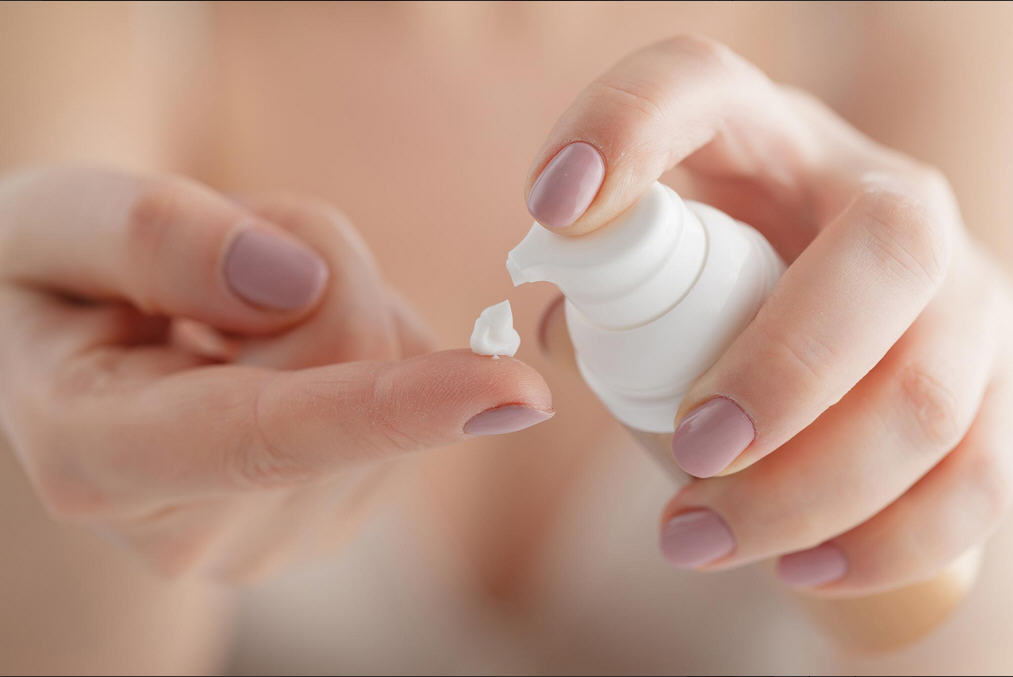博文
流行的护肤品可能会让你的宝宝接触到干扰内分泌的化学物质
 精选
精选
||
流行的护肤品可能会让你的宝宝接触到干扰内分泌的化学物质
诸平
据美国 乔治·梅森大学(George Mason University, Fairfax, Virginia, USA)2024年10月30日提供的消息,令人震惊的研究:流行的护肤品可能会让你的孩子接触到干扰内分泌的化学物质(Alarming Study: Popular Skin Care Products Could Be Exposing Your Children to Endocrine-Disrupting Chemicals)。
一项研究发现,儿童使用护肤品与高邻苯二甲酸酯(phthalate)含量有关,这与种族、民族和出生时的性别有关。
乔治·梅森大学公共卫生学院全球和社区健康系(Department of Global and Community Health at George Mason University’s College of Public Health)教授迈克尔·布鲁姆(Michael S. Bloom)领导的一项新研究发现,使用乳液、发油、护发素、药膏、防晒霜等护肤产品与儿童尿液中邻苯二甲酸酯的含量升高有关。相关研究结果2024年9月4日已经在《环境卫生展望》(Environmental Health Perspectives)杂志网站在线发表——Michael S. Bloom, Juliana M. Clark, John L. Pearce, Pamela L. Ferguson, Roger B. Newman, James R. Roberts, William A. Grobman, Anthony C. Sciscione, Daniel W. Skupski, Kelly Garcia, John E. Vena, Kelly J. Hunt. Impact of Skin Care Products on Phthalates and Phthalate Replacements in Children: the ECHO-FGS. Environmental Health Perspectives, 2024, 132(9): DOI: 10.1289/EHP13937. Published 4 September 2024. https://ehp.niehs.nih.gov/doi/10.1289/EHP13937
参与此项研究的除了来自美国乔治·梅森大学的研究人员之外,还有来自美国南卡罗来纳医科大学(Medical University of South Carolina, Charleston, South Carolina, USA)、美国俄亥俄州立大学韦克斯纳医学中心(The Ohio State University Wexner Medical Center, Columbus, Ohio, USA)、美国特拉华州纽瓦克的克里斯蒂安娜医疗保健系统(Christiana Care Health System, Newark, Delaware, USA)以及美国纽约-皇后区长老会医院(New York-Presbyterian Queens Hospital, Queens, New York, USA)的研究人员。
使用护肤产品与儿童尿液中邻苯二甲酸酯的含量升高有关的这种联系,部分取决于孩子的种族和民族身份以及出生时的性别。这项研究是由两位乔治·梅森大学公共卫生硕士校友朱莉安娜·克拉克(Juliana Clark)和凯利·加西亚(Kelly Garcia)等人共同撰写的。
迈克尔·布鲁姆说:“这是首个研究表明,幼儿使用的不同护肤品可能会不同地增加幼儿接触干扰内分泌的邻苯二甲酸酯类(phthalates)和邻苯二甲酸酯替代品(phthalate replacements)的风险。”
研究表明邻苯二甲酸酯在人体和动物体内发挥着类似雌性激素的作用,可干扰内分泌,使男子精液量和精子数量减少,精子运动能力低下,精子形态异常,严重的会导致睾丸癌,是造成男子生殖问题的“罪魁祸首”。
在化妆品中,指甲油的邻苯二甲酸酯含量最高,很多化妆品的芳香成分也含有该物质。化妆品中的这种物质会通过女性的呼吸系统和皮肤进入体内,如果过多使用,会增加女性患乳腺癌的几率,还会危害到她们未来生育的男婴的生殖系统。更多信息详见《百度百科——邻苯二甲酸酯》介绍。
邻苯二甲酸酯和邻苯二甲酸酯替代化合物是干扰内分泌的化学物质,这意味着它们可能会干扰人体的激素。在以前的研究中,儿童早期接触这些化学物质与神经发育、生殖和代谢疾病有关。其中一些化学物质经常被用作护肤品中活性成分的载体,其他可用于塑料包装。
研究方法和数据收集(Study Methodology and Data Collection)
这项研究从美国10个不同的地点收集了630名年龄在4~8岁之间的儿童的医疗数据,包括临床检查和尿液分析。孩子的父母或监护人也被要求在孩子检查前24小时内完成一份调查,其中包括孩子的社会人口统计信息(种族/民族身份,出生时的性别等)。
调查还要求家长列出在检查前24小时内涂抹在孩子皮肤上的所有护肤产品,包括乳液、肥皂、洗发香波、精油和化妆品,并尽可能详细地列出产品类型和品牌或通用名称。
迈克尔·布鲁姆说:“我们发现最近使用不同的护肤品与高浓度的邻苯二甲酸酯和邻苯二甲酸酯替代化合物之间存在关联。根据儿童的种族和民族身份以及出生时的性别,使用护肤品与内分泌干扰物质之间存在不同的关系。我们还发现,使用多种护肤产品的不同模式预示着更高浓度的邻苯二甲酸酯和邻苯二甲酸酯替代品。”
迈克尔·布鲁姆和他的团队表示,需要进一步的研究来证实这些发现,但结果表明,不同种族和民族的儿童接触邻苯二甲酸酯的风险可能不同。特别是,他们发现非西班牙裔黑人(non-Hispanic Black)参与者尿液中邻苯二甲酸酯和邻苯二甲酸酯替代品的含量最高。这些差异可能与品牌的可用性和偏好、产品应用的方法和时间,以及不同种族和民族身份的儿童使用的频率有关。
政策影响及家长指引(Policy Implications and Parental Guidance)
迈克尔·布鲁姆说:“研究结果可以为政策提供信息,以解决在可能用于儿童的护肤品中使用内分泌干扰化学物质的问题,并帮助父母决定使用产品以限制孩子接触潜在的发育毒性化学品。”
这项研究得到了美国卫生和人类服务部(HHS)、美国国立卫生研究院(NIH)、美国国家儿童健康和人类发展研究所(NICHD)(HHSN275200800014C/HD/NICHD NIH HHS/United States; HHSN275200800002C/HD/NICHD NIH HHS/United States; HHSN275200800012C/HD/NICHD NIH HHS/United States)、美国环境健康科学院(National Institute Of Environmental Health Sciences简称NIEHS,U2C ES026553/ES/NIEHS NIH HHS/United States)以及美国皮肤疾病研究院 (National Institute Of Arthritis And Musculoskeletal And Skin Diseases简称NIAMS,R21 AR084039/AR/NIAMS NIH HHS/United States)的资助。
上述介绍,仅供参考。欲了解更多信息,敬请注意浏览原文或者相关报道。
Jen Holland. New study finds associations between use of skin care products and exposure to potential developmental toxicants. George Mason University News, September 4, 2024.
Background: Phthalates and their replacements have been implicated as developmental toxicants. Young children may be exposed to phthalates/replacements when using skin care products (SCPs).
Objectives: Our objective is to assess the associations between use of SCPs and children’s urinary phthalate/replacement metabolite concentrations.
Methods: Children (4–8 years old) from the Environmental Influences on Child Health Outcomes-Fetal Growth Study (ECHO-FGS) cohort provided spot urine samples from 2017 to 2019, and mothers were queried about children’s SCP use in the past 24 h (n=906). Concentrations of 16 urinary phthalate/replacement metabolites were determined by liquid chromatography–tandem mass spectrometry (n=630). We used linear regression to estimate the child’s use of different SCPs as individual predictors of urinary phthalate/replacement metabolites, adjusted for urinary specific gravity, age, sex assigned at birth, body mass index, and self-reported race/ethnic identity, as well as maternal education, and season of specimen collection. We created self-organizing maps (SOM) to group children into “exposure profiles” that reflect discovered patterns of use for multiple SCPs.
Results: Children had lotions applied (43.0%) frequently, but “2-in-1” hair-care products (7.5%), sunscreens (5.9%), and oils (4.3%) infrequently. Use of lotions was associated with 1.17-fold [95% confidence interval (CI): 1.00, 1.34] greater mono-benzyl phthalate and oils with 2.86-fold (95% CI: 1.89, 4.31) greater monoethyl phthalate (MEP), 1.43-fold (95% CI: 1.09, 1.90) greater monobutyl phthalate (MBP), and 1.40-fold (95% CI: 1.22, 1.61) greater low-molecular-weight phthalates (LMW). Use of 2-in-1 haircare products was associated with 0.84-fold (95% CI: 0.72, 0.97) and 0.78-fold (95% CI: 0.62, 0.98) lesser mono(3-carboxypropyl) phthalate (MCPP) and MBP, respectively. Child’s race/ethnic identity modified the associations of lotions with LMW, oils with MEP and LMW, sunscreen with MCPP, ointments with MEP, and hair conditioner with MCPP. SOM identified four distinct SCP-use exposure scenarios (i.e., profiles) within our population that predicted 1.09-fold (95% CI: 1.03, 1.15) greater mono-carboxy isononyl phthalate, 1.31-fold (95% CI: 0.98, 1.77) greater mono-2-ethyl-5-hydroxyhexyl terephthalate, 1.13-fold (95% CI: 0.99, 1.29) greater monoethylhexyl phthalate, and 1.04-fold (95% CI: 1.00, 1.09) greater diethylhexyl phthalate.
Discussion: We found that reported SCP use was associated with urinary phthalate/replacement metabolites in young children. These results may inform policymakers, clinicians, and parents to help limit children’s exposure to developmental toxicants. https://doi.org/10.1289/EHP13937
https://blog.sciencenet.cn/blog-212210-1457868.html
上一篇:量子压缩:下一代精密技术的关键
下一篇:纳米塑料可以降低抗生素的有效性
